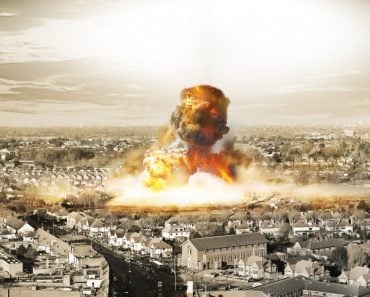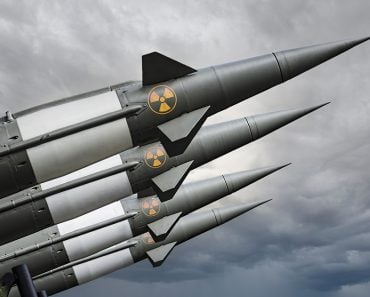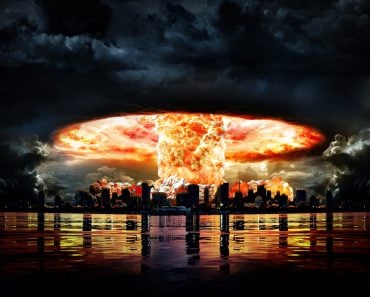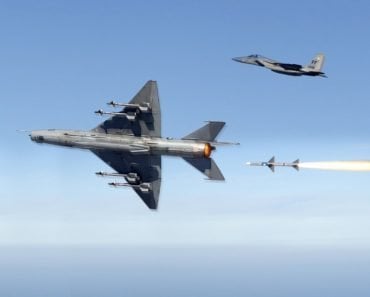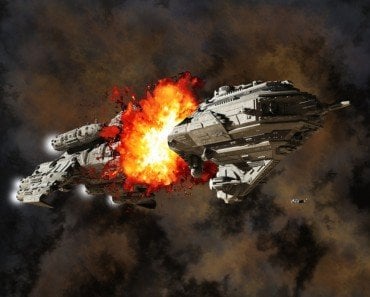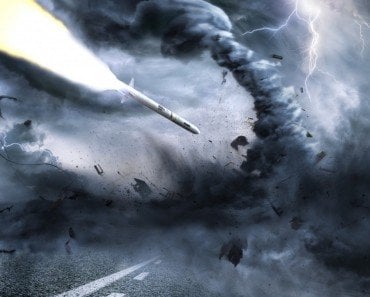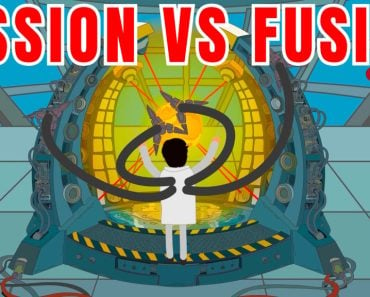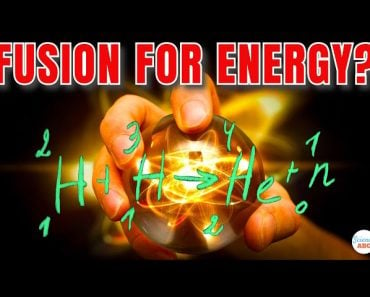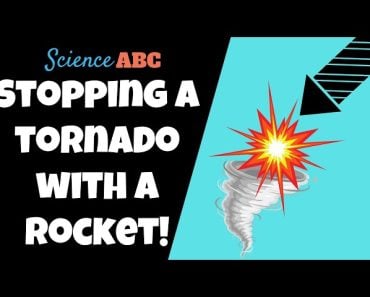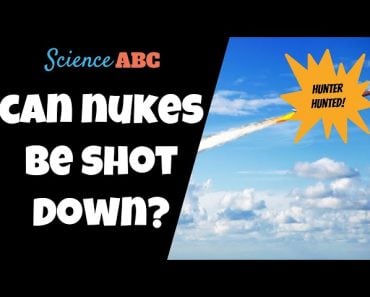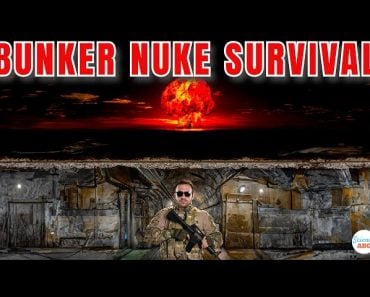Table of Contents (click to expand)
A nuclear/atomic explosion creates a mushroom cloud because the detonating bomb suddenly releases a great deal of heat rapidly, which interacts with the cooler surrounding air and makes it less dense. The giant fireball is extremely hot, which rises rapidly in the air, creating a vacuum that is then rapidly filled by the surrounding air, forming a mushroom cloud in the process.
A nuclear/atomic explosion creates a mushroom cloud because the detonating bomb suddenly releases a great deal of heat rapidly, which interacts with the cooler surrounding air and makes it less dense. The giant fireball is extremely hot, which rises rapidly in the air, creating a vacuum that is then rapidly filled by the surrounding air, forming a mushroom cloud in the process.
If you’ve ever looked up pictures of nuclear explosions on the Internet, you have likely observed something rather intriguing about them: regardless of the type of explosion or where they occur, all of them appear to form a ‘mushroom cloud’ in the sky.
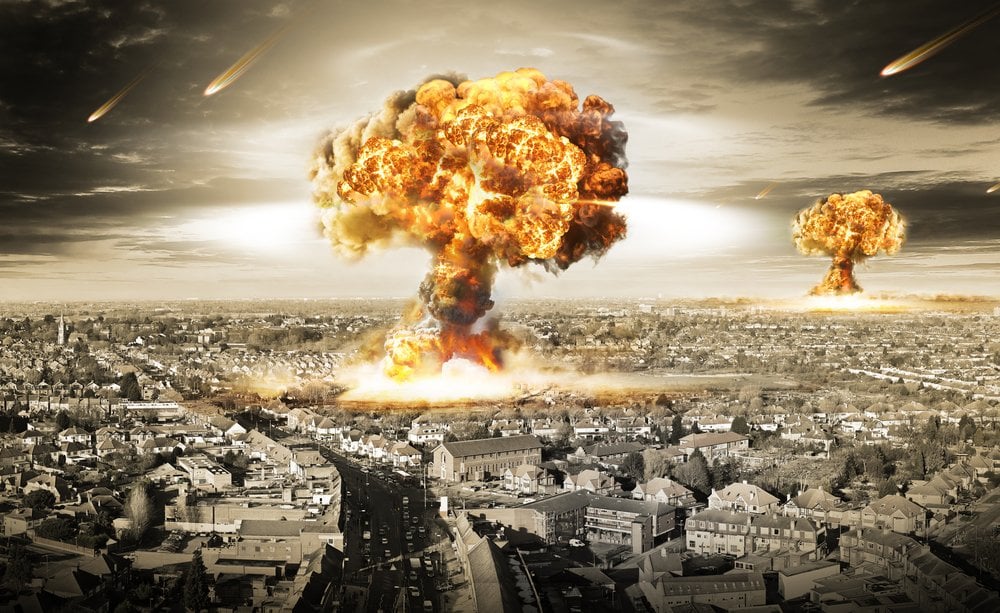
One noteworthy aspect of nuclear explosions is that they’re markedly different from regular explosions, i.e., the ones caused by dynamites, grenades, missiles etc. So, why do nuclear explosions cause such dramatic and consistent formations in the sky?
Recommended Video for you:
What’s A Mushroom Cloud?
A mushroom cloud is an iconic mushroom-shaped cloud of smoke/debris that forms in the sky following an extremely large explosion. Although it’s usually associated with a nuclear explosion, a mushroom cloud can be formed following any event that results in a rapid release of heat, like a volcano, a forest fire, an impact event (a large-scale collision between astronomical objects) or a particularly powerful explosion (like those caused by vacuum bombs).
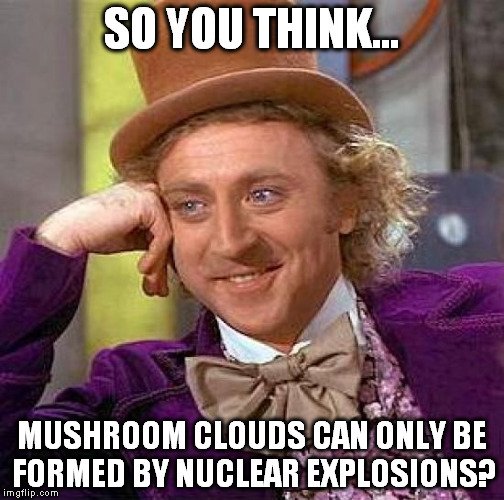
Why Do Nuclear Explosions Cause Mushroom Clouds?
A particularly powerful explosion is accompanied by a sudden release of a great deal of heat. This heat interacts with the surrounding air, making it hotter and less dense, resulting in what’s known as Rayleigh–Taylor instability in scientific circles. Simply put, it says that when two fluids of different densities (and thus subject to different accelerations) interact, the lighter fluid pushes on the denser fluid.
Apart from the mushroom cloud itself, the suspension of water atop oil, volcanic eruptions, jet streams of winds that regulate Earth’s climate, and supernovae explosions are some instances where Rayleigh-Taylor instability comes into play.
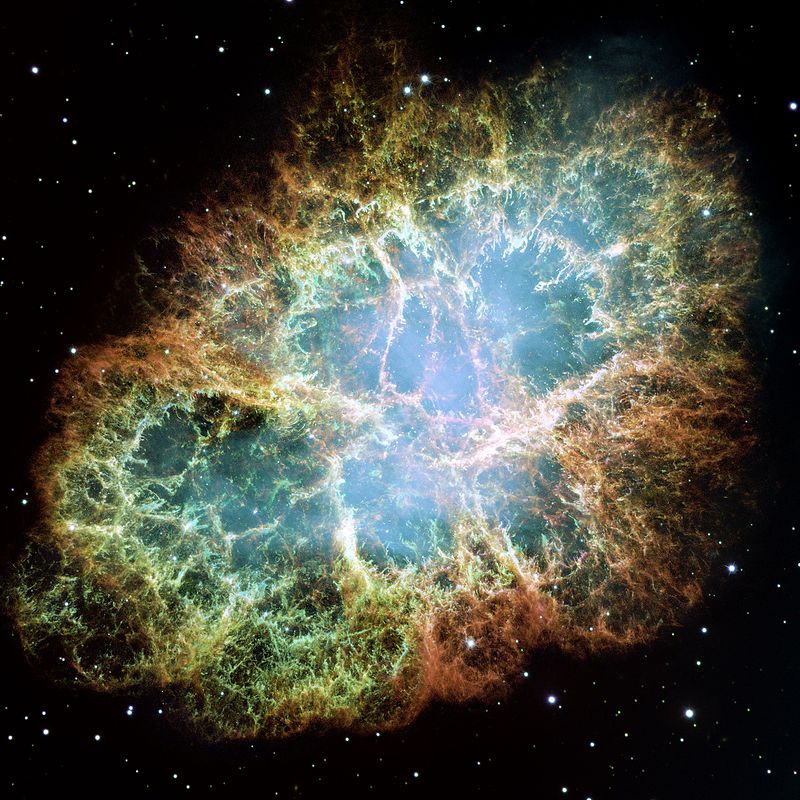
As mentioned earlier, the sudden release of energy following an explosion heats up the surrounding air which then starts to expand. The giant fireball created in the initial stages of the explosion is incredibly hot, with temperatures running up to millions of degrees of Celsius, which is akin to what you could expect to find in the middle of the Sun!
Now, the hot air within the fireball rises rapidly in the air, creating a vacuum that is then rapidly filled by the surrounding air, which also expands and starts to rise. This process continues for quite some time, during which the fireball continues to quickly rise through the sky.
As the fireball continues to rise, it experiences resistance from the air on top of it, which pushes it down sideways. This leads to the flattening of the top of the cloud, which then appears like the cap of a mushroom. The displaced gas, which is at a lower temperature than the air in the center of the column, trickles down the sides of the column, only to get sucked back in by the rising column to travel upwards again.
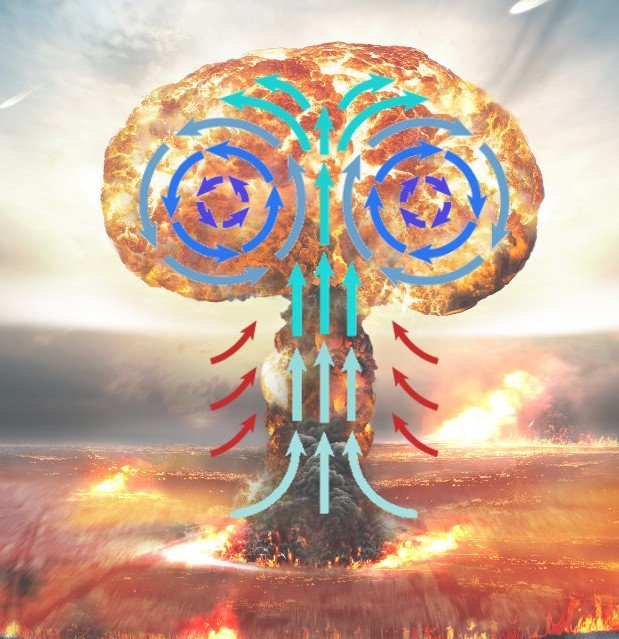
This is the reason why the edges of an explosion’s fireball appear to be curling constantly. Since a nuclear explosion occurs at a much larger scale than regular explosions, the fireball it creates is proportionally gigantic.
End Of The Fireball’s Journey
The fireball continues to rise in the air until it reaches the point where the surrounding air is no longer cool. This is significantly high up in the atmosphere, i.e. where ozone heats up the surrounding gas by absorbing harmful solar radiation. When the surrounding air is no longer hotter than the gases in the fireball, the rising air stops abruptly and spreads out horizontally, making a perfect top for the mushroom cloud.
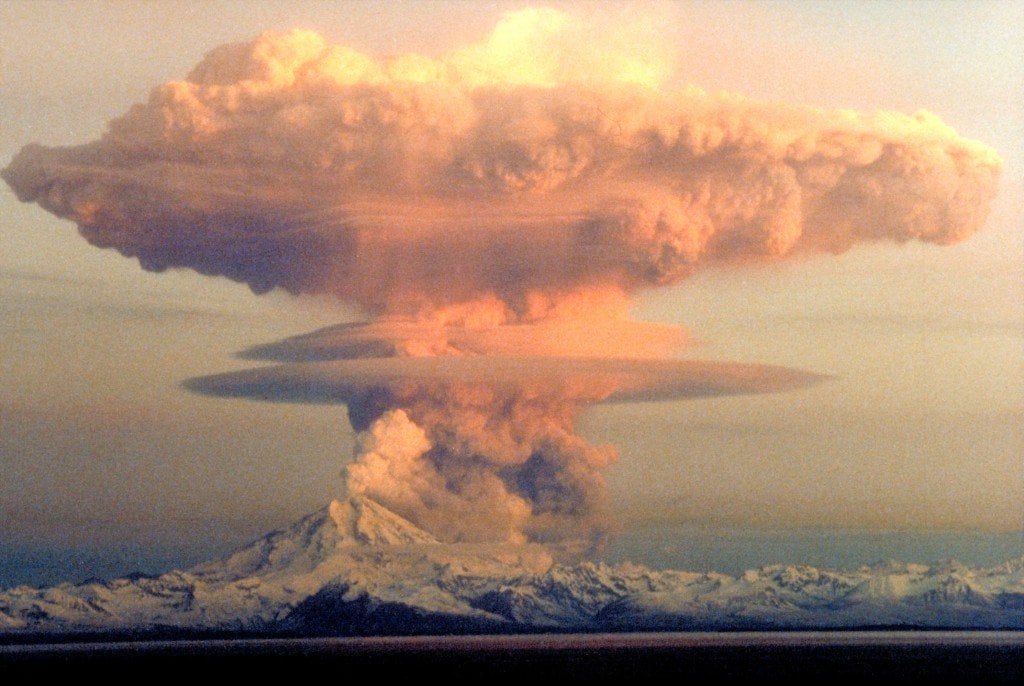
How Big Is A Nuclear Mushroom Cloud?
Mushroom clouds formed as a result of nuclear explosions can go thousands of meters in the sky, easily surpassing the height of Mt. Everest – the tallest mountain peak in the world.
The strength of nuclear explosions is measured in Kilotons and Megatons of TNT. The TNT equivalent is generally used to express the amount of energy released in a bomb’s explosion. A bomb is marked to have a yield of ‘1 Kiloton’ when its detonation releases a certain amount of energy which is equivalent to detonating 1,000 kilograms of TNT. 1 Megaton is equivalent to 1,000 Kilotons.
The nuclear explosion that occurred in Hiroshima, Japan in 1945 exploded with an energy of 15 kilotons.
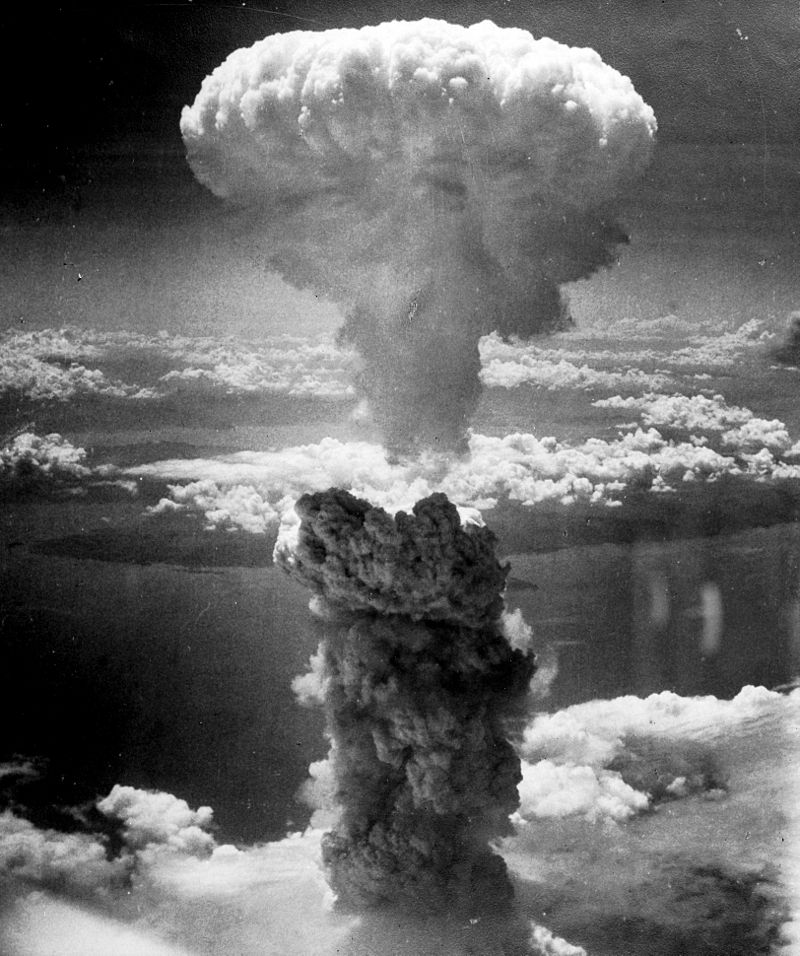
What Are The Biggest Nuclear Bomb Explosions Of All Time?
These are the 3 most powerful man-made explosions in the history of mankind (in descending order of their strength):
- The biggest, most powerful nuclear explosion of all time occurred as a result of the detonation of Tsar Bomba, the most forceful nuclear weapon ever detonated in the history of mankind. It was a Russian bomb that was tested on 30 October 1961. It had a yield of 57 Megatons, which was around 3,300 times more powerful than the Hiroshima explosion!
- The second most energetic explosion occurred following the detonation of the B-41 nuclear bomb – a thermonuclear weapon deployed by the United States in the early 1960s. Its yield was 25 Megatons.
- The third biggest nuclear explosion occurred due to the detonation of another American thermonuclear weapon called Castle Bravo, which detonated with a yield of around 15 Megatons in March 1954. These were the three most powerful explosions in the history of mankind.
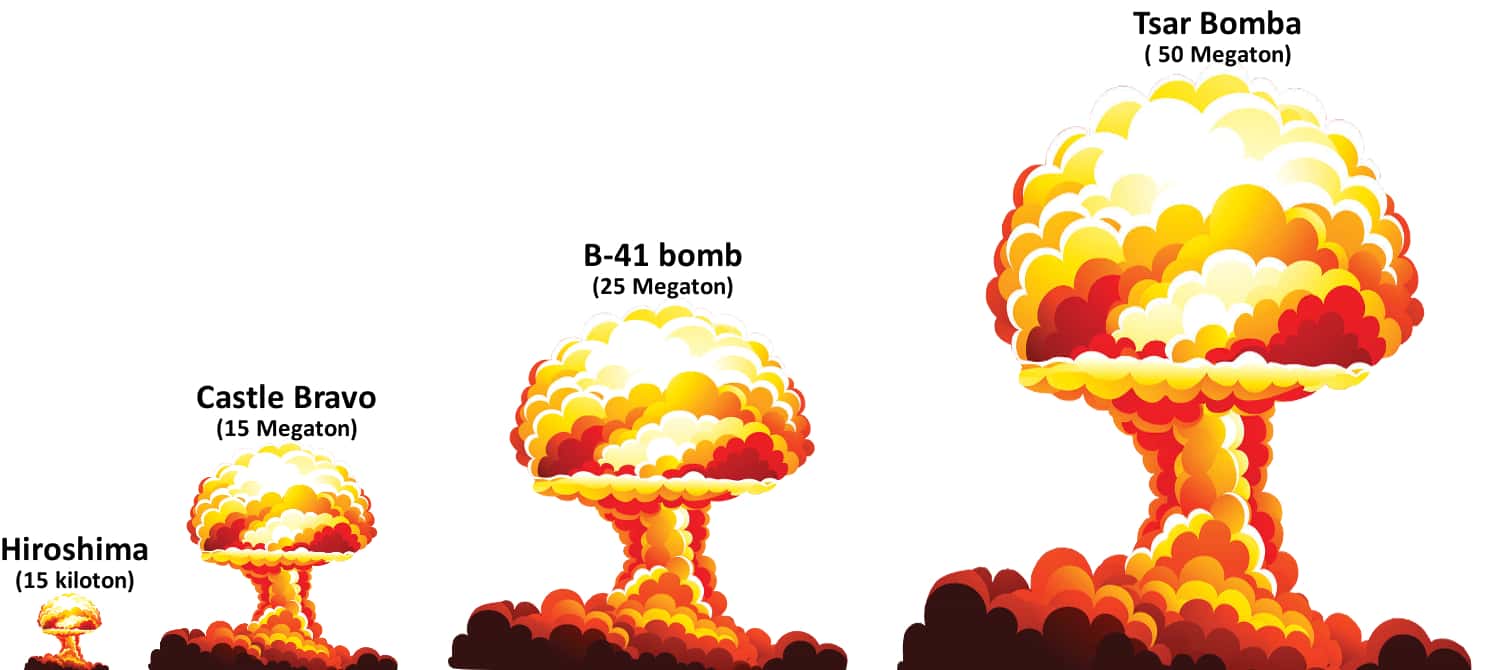
As you can see, a sudden, rapid and concentrated release of heat in a relatively cool surrounding is all it takes to form a mushroom cloud in the sky. So, the next time you see an image of a mushroom cloud, don’t jump to the ‘it must be nuclear way’ conclusion; it might just be a powerful volcanic eruption or a raging forest inferno. Neither of those options are ideal either, but it’s better than a sign that the nuclear apocalypse has begun!


